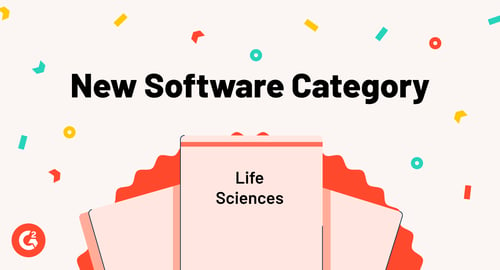We may only get one life, but that doesn’t mean we only get one Life Sciences category.
Pause for eye rolls.
G2 has been working to identify gaps in our life sciences taxonomy and we’re thrilled to announce two new categories as part of that effort: Electronic Trial Master File (eTMF) and Regulatory Information Management (RIM) Systems.
Let’s dive into how these solutions help manage compliance and quality control for life sciences companies.
What is electronic trial master file (eTMF) software?
eTMF software is a specialized content management system that captures, stores, and manages all essential documents and images from a clinical trial.
TMFs are an important part of the trial process, as they demonstrate whether or not the trial was conducted successfully in accordance with all regulatory requirements. Sites, sponsors, and contract research organizations (CROs) can collaborate in real time on the TMF, track key metrics for study completion, share and migrate content, and search and filter data.
What is a regulatory information management (RIM) system?
RIM systems connect with medical QMS and PLM solutions to provide a centralized record of regulatory documents and activities throughout the product development lifecycle for pharmaceutical and medtech companies.
Regulatory affairs (RA) professionals rely on these systems to maintain up-to-date information for each product and ensure it meets all regional regulatory requirements to obtain market clearance and conduct post-market pharmacovigilance activities.
RIM systems enable collaborative authoring on supporting documentation pertaining to regulatory submissions, product registration, unique device identifier (UDI) labels, essential principles, and standards management.
Compliance doesn’t have to be a drag
While the use cases of eTMF software and RIM systems differ within the life sciences industry, they both support a common goal: simplifying the regulatory compliance process, whether it be for clinical trials or medtech and pharmaceutical product development.
TMFs are required for every clinical trial, as they demonstrate the trial was conducted in accordance with all regulatory standards required by law. The most common standard that eTMF software supports is Good Clinical Practice (GCP), which is an internationally recognized set of ethical and scientific quality standards that must be followed when designing, conducting, recording, and reporting clinical trials that involve people.
Traditionally, TMFs were managed via paper-based systems, and, well, one can see how that quickly leads to unnecessary stress.
The main benefit of an eTMF is that it digitizes all the required documentation surrounding a clinical trial, centralizing this information and making it easier to access and collaborate on documents throughout the trial lifecycle.
These documents can include study design protocols, training manuals, funding and budget records, participant information, and safety and auditing reports. eTMF software makes it exponentially easier to flag missing or incorrect documentation in real-time, track compliance milestones as a trial progresses, and speed up approval workflows.
RIM systems, on the other hand, support the unique workflows for regulatory affairs (RA) professionals and centralize documentation related to that work. From pre-market to post-market product lifecycle, these systems ensure product development complies with all regulatory guidelines that govern their desired target markets.
This includes supporting registrations submissions for market entrance approval, ongoing audits to maintain those certifications, and post-market pharmacovigilance activities to address any product safety issues.
A RIM system is the holy source of truth for RA teams in the medtech and pharmaceutical markets. It simplifies regulatory intelligence gathering, dossier and UDI management, standards management, and post market surveillance report (PMSR) and periodic safety update report (PSUR) requirements. Like eTMF software, RIM systems support the overall content management process and make it easier for teams to collaborate on proper regulatory documentation.
How do eTMF software and RIM systems help G2 users?
Like any software, not every eTMF or RIM system is equal.
Some products may offer greater document storage and retrieval functionality, support greater levels of region-specific requirements, and bulk uploading. Integration with specific systems, such as clinical trial management systems or medical quality management systems, can also be a factor in making the right decision.
Using these two new G2 categories, buyers can compare some of these solutions and discover which is right for their team’s needs.
G2’s life sciences taxonomy will continue to expand
While the eTMF and RIM systems categories fill a gap in G2’s existing life sciences taxonomy, the work continues!
Keep an eye on this space as our clinical research, pharmaceutical, and medtech software taxonomy expands to account for the different solutions used by these organizations to manage other aspects of trials and product development. Life sciences organizations can rely on G2’s peer reviews to assess the pros and cons of potential solutions and make the best decision for their business.
Learn about medical documents and the types, benefits, and challenges of clinical documentation.
Edited by Sinchana Mistry


 by Dominick Duda
by Dominick Duda
 by Dominick Duda
by Dominick Duda
 by Dominick Duda
by Dominick Duda